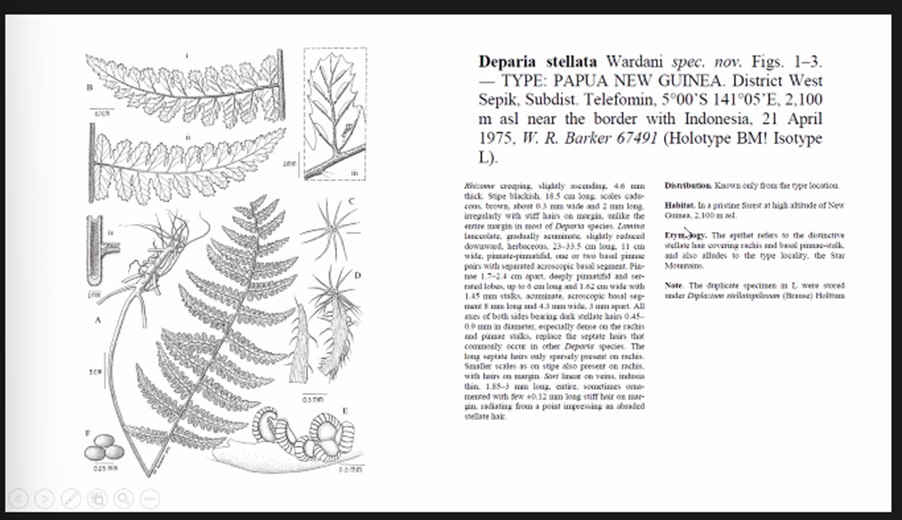Get to Know Newly Discovered Fern Species through Biosystematics Science
By Adi Permana
Editor Adi Permana

BANDUNG, itb.ac.id – In biology, we use taxonomy as a system to classify different kinds of organisms. There are seven ranks in the taxonomy system: (1) Kingdom; (2) Phylum or Division; (3) Class; (4) Order; (5) Family; (6) Genus; and (7) species.
The ranks in the taxonomy system were invented to help identify and classify the huge diversity of organisms that exist on earth. Therefore, the Biosystematics field of science was developed to help us better identify the diversity of organisms and their relationship with each other.
The Biology Study Program, School of Life Sciences and Technology ITB (SITH ITB) held a guest lecture for the BI 2208 Biosystematics course. This event invited Wita Wardani M.Sc., a researcher at the Research Center for Biosystematics and Evolution, as the main speaker to present a lecture on "New Fern Species", Wednesday (30/3/2022).
Biosystematics is the study of the diversification of organisms and the relationship among those organisms through time. The biosystematics field of science includes subdisciplines of taxonomy and systematics such as taxon identification, taxon universal diagnosis, the task of assigning a universally acceptable name to an organism, analyzing the relationship between taxa, and classifying taxa based on their relationship.
Taxonomy and systematics are different. "Taxonomy is used for character identification, understanding classification, and establishing nomenclature through processes of detailing, naming, and classifying. While systematics is used for classifying and establishing phylogenetic relationships among species based on genetics, diversification, and evolution," said Wita. The outputs of taxonomy are revision, monograph, flora, and identical key, while the outputs of systematics are relatives-tree and phylogenetic studies.
The new species of ferns that was introduced in this guest lecture is Deparia stellata. This fern was first discovered in the deep of the Bintang jungle, Papua New Guinea. "This research was based on the fern samples that were collected by W.R. Barker during his expedition to the Bintang mountain range in 1975," explained Wita.

Wita emphasized that this discovery is an important achievement in the identification and collection of fern species, especially in the Malesia phytogeography region. The availability of herbariums that were borrowed by the Natural History Museum London is a key aspect in the discovery of this new species. This Deparia stellata species was discovered during an observation using a high-magnification microscope on Bogor Herbarium. The result is that this fern was confirmed as a newly discovered species and its discovery was published in Reinwardtia journal on 6 December 2021.
Lastly, Wita closed her presentation by sharing some information and tips with the students on what to do when they are conducting research to discover a new species. "Do your observation with as many samples as possible, understand the variations thoroughly, and conduct literature studies to confirm your findings. Moreover, we also need to develop concepts of recognizing characters' uniqueness, assigning a name that represents the species ICBN, and finally, to always remember that 'taxonomy comes first, nomenclature follows’," ended Wita.
Reporter: Yoel Enrico Meiliano (Food Engineering, 2020)
Translator: Favian Aldilla Rachmadi (Civil Engineering, 2019)

.jpg)
.jpg)
.jpg)
.jpg)
.png)



